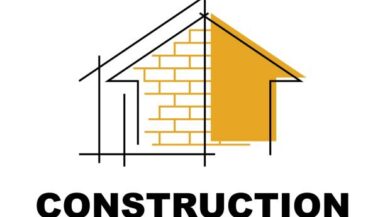Introduction
When it comes to building a house, the foundation is arguably the most crucial element. A strong and stable foundation provides the basis for a secure and long-lasting structure. In this article, we will explore the concept of “building your house on a rock” both literally and metaphorically. We will delve into the importance of a robust foundation, the process of constructing a resilient structure, the benefits of such an approach, and the steps you can take to ensure your dream home stands the test of time.
The Importance of a Strong Foundation
Why You Should Build Your House on a Rock
The phrase “build your house on a rock” originates from an ancient parable that emphasizes the significance of a solid foundation in life. Translated into the realm of architecture, it highlights the importance of constructing buildings on stable ground. Building on unstable or soft soil can lead to disastrous consequences, such as structural damage, settlement issues, and even collapse during natural disasters.
Choosing the Right Location
Assessing the Ground
Before laying the foundation, it’s crucial to evaluate the soil’s stability and load-bearing capacity. Geotechnical assessments can determine whether the site is suitable for construction and what type of foundation will be most appropriate.
Avoiding Potential Hazards
When selecting a location, it’s essential to identify potential hazards like flood-prone areas or regions prone to landslides. Avoiding such locations can significantly reduce the risk of future problems.
Building a Solid Base
Excavation and Site Preparation
The process of building on a rock begins with excavation and site preparation. Clearing the area and creating a level surface are essential steps before laying the foundation.
Reinforcing the Foundation
To ensure added strength and stability, reinforcements such as steel bars or mesh can be integrated into the foundation during construction.
Using Quality Materials
Concrete and Steel
High-quality construction materials like concrete and steel are essential for a sturdy foundation. Investing in premium materials can prevent future structural issues.
Waterproofing and Drainage
Proper waterproofing and drainage systems are essential to prevent water damage and maintain the integrity of the foundation.
Constructing the Walls and Roof
Sturdy Walls for Stability
The walls of a house are responsible for bearing the vertical loads and maintaining the overall stability of the structure. Building strong and resilient walls is crucial for the safety of the occupants.
A Reliable Roof to Protect
The roof serves as the primary shield against the elements. A well-constructed roof is essential for protecting the interior of the house from rain, wind, and other weather conditions.
Creating a Resilient Structure
Earthquake and Storm Resistance
Building on a rock provides better resistance to earthquakes and severe storms, reducing the risk of significant damage.
Long-Term Durability
A solid foundation and well-built structure contribute to the long-term durability of the house, reducing the need for frequent repairs.
Energy Efficiency and Sustainability
Green Building Practices
Incorporating green building practices can lead to a more energy-efficient and environmentally friendly home.
Eco-Friendly Materials
Choosing sustainable and eco-friendly construction materials minimizes the environmental impact of building your house.
Ensuring Safety and Compliance
Building Codes and Regulations
Adhering to local building codes and regulations ensures that your house is safe and compliant with the law.
Regular Inspections and Maintenance
Regular inspections and maintenance can identify and address potential issues before they become major problems.
The Symbolic Meaning of Building on a Rock
Beyond the literal interpretation, building on a rock symbolizes a solid and unshakable foundation in life. It signifies the importance of stability and security in all aspects of one’s existence.
The Benefits of Building on a Rock
Stability and Security
Building on a rock provides a sense of stability and security, knowing that your home is constructed on reliable ground.
Peace of Mind in Adverse Conditions
During storms, floods, or other adverse conditions, those with houses built on a rock can rest assured that their homes are less vulnerable to damage.
The Downside of Building on Unstable Ground
Risks of Building on Soft Soil or Floodplains
Building on soft soil or flood-prone areas can lead to foundation settling, structural issues, and potential flooding risks.
How to Start Building Your House on a Rock
Planning and Designing the Structure
Careful planning and designing are essential to ensure that your dream home becomes a reality on stable ground.
Hiring Professional Contractors
Seeking assistance from experienced professionals ensures that the construction process is carried out with expertise and precision.
Tips for Building a Rock-Solid Home on a Budget
Cost-Effective Materials and Techniques
You can build a stable home without breaking the bank by employing cost-effective materials and construction techniques.
Avoiding Overspending on Unnecessary Features
Focusing on essential features and avoiding unnecessary extravagance can help you stay within your budget while still building a reliable home.
Conclusion
Building your house on a rock is not only a practical construction principle but also a metaphor for life’s stability and security. A strong foundation sets the stage for a resilient and durable home that can weather any storm. By choosing the right location, using quality materials, and adhering to building codes, you can ensure your house stands tall for generations to come.





Leave a reply